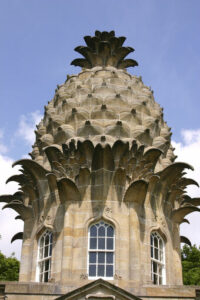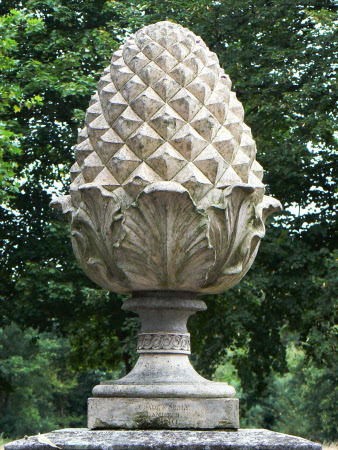

Dunmore Pineapple, Scotland
Nestled amidst the enchanting landscapes of Scotland lies a hidden gem that is sure to captivate imaginations – Dunmore. While this picturesque town boasts stunning natural beauty, it is also home to a truly extraordinary architectural wonder: the Dunmore Pineapple.
Rising majestically from the Dunmore Estate, the Dunmore Pineapple is a marvel that seamlessly combines Scottish grandeur with a touch of tropical whimsy. This iconic structure stands tall, its ornate stone structure adorned with intricate details and crowned by an extraordinary pineapple-shaped dome.
So, why a pineapple? In the 18th century, pineapples were a coveted symbol of wealth, luxury, and hospitality. They represented exoticism and were highly sought after as a sign of status and refined taste. The Dunmore Pineapple, built in 1761, was commissioned by the 4th Earl of Dunmore, a man with an adventurous spirit and an eye for unique architectural expressions.
The Dunmore Pineapple serves as a striking garden pavilion, designed to delight visitors with its charm and whimsy. Standing amidst lush greenery, it offers a breathtaking view of the surrounding landscape.
Ham House, Surrey. Coade Stone Pineapple Finial
Ham House is a stunning example of Stuart-era architecture and is known for its well-preserved interiors and beautiful gardens.
The pineapple, as a decorative motif, held special significance during that period. It symbolised wealth, hospitality, and exoticism. Pineapples were considered a rare and luxurious fruit, often associated with prosperity and hospitality.
The addition of a pineapple finial to the roof or gatepost of a grand residence, such as Ham House, was a way to showcase the status and taste of the owner. It served as a visual statement, signalling the affluence and refined sensibilities of the inhabitants.
The specific date of when the pineapple finial was added to Ham House is not precisely documented, but it is believed to have been incorporated during the 19th century. Today, the pineapple finial at Ham House stands as a testament to the architectural and decorative choices of the past. It continues to be an iconic symbol of the grandeur and elegance associated with historical residences of that era. Visitors to Ham House can still admire this charming pineapple finial, marvelling at its historical significance and the enduring beauty it adds to the overall architectural design of the house.

